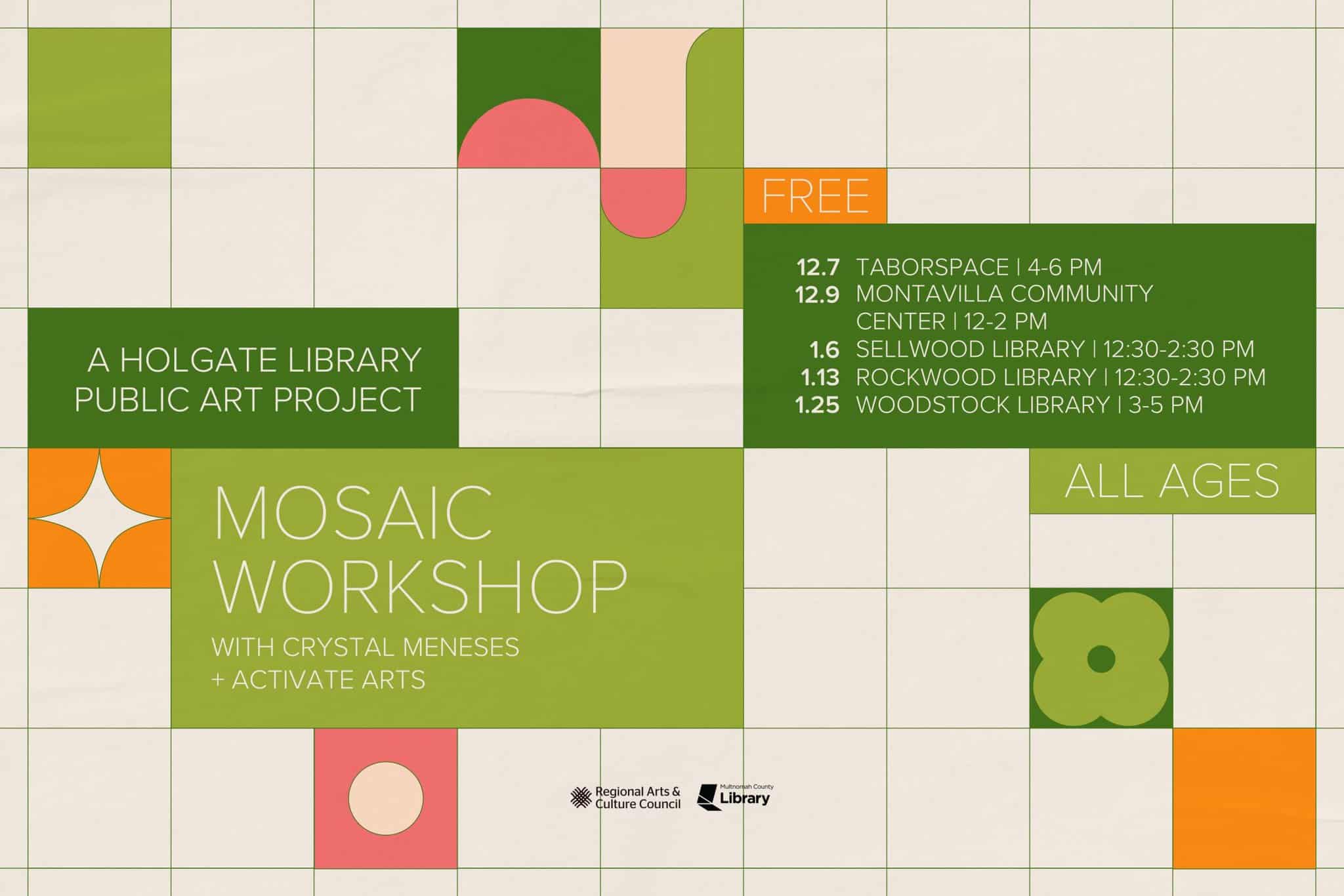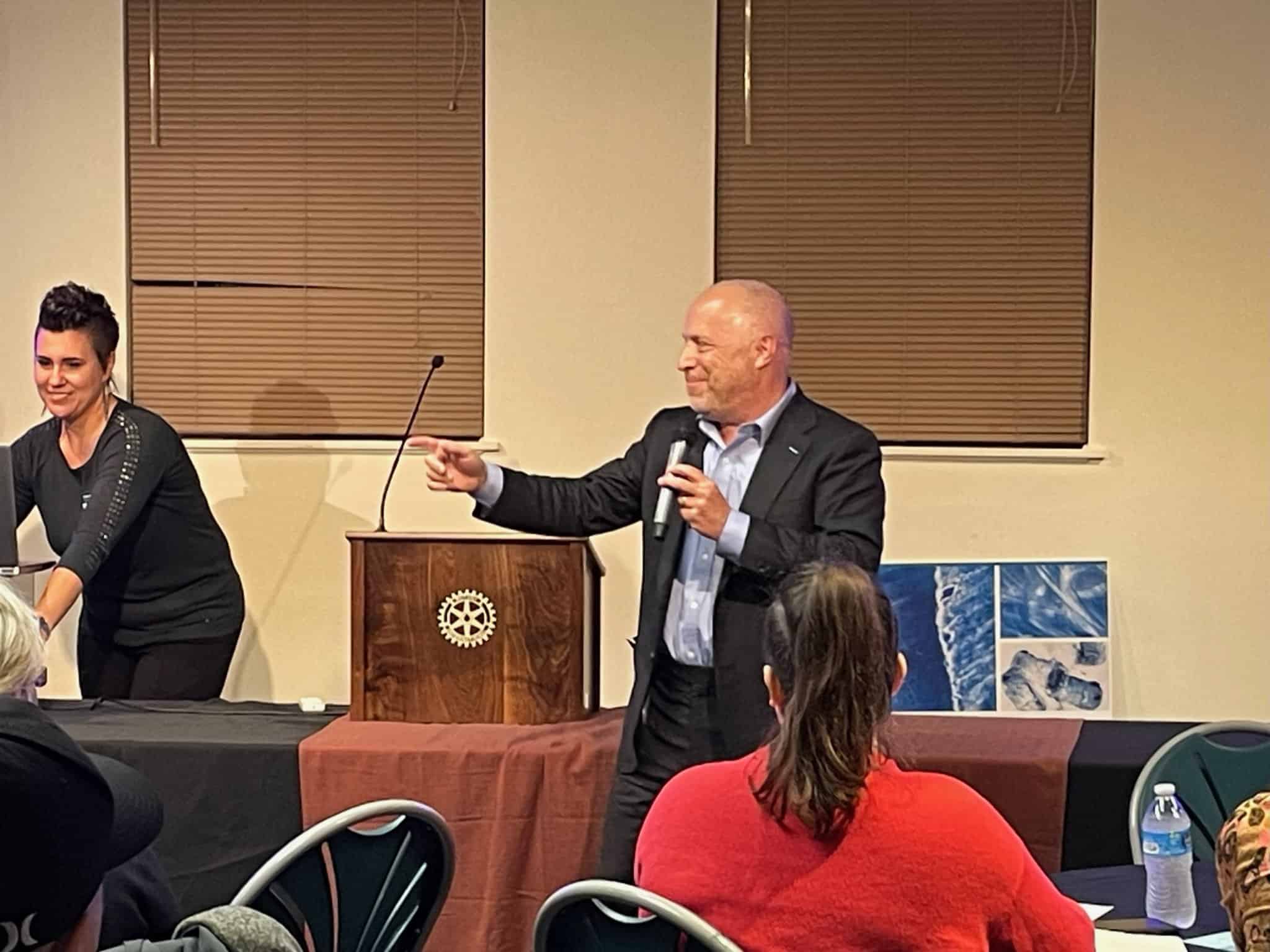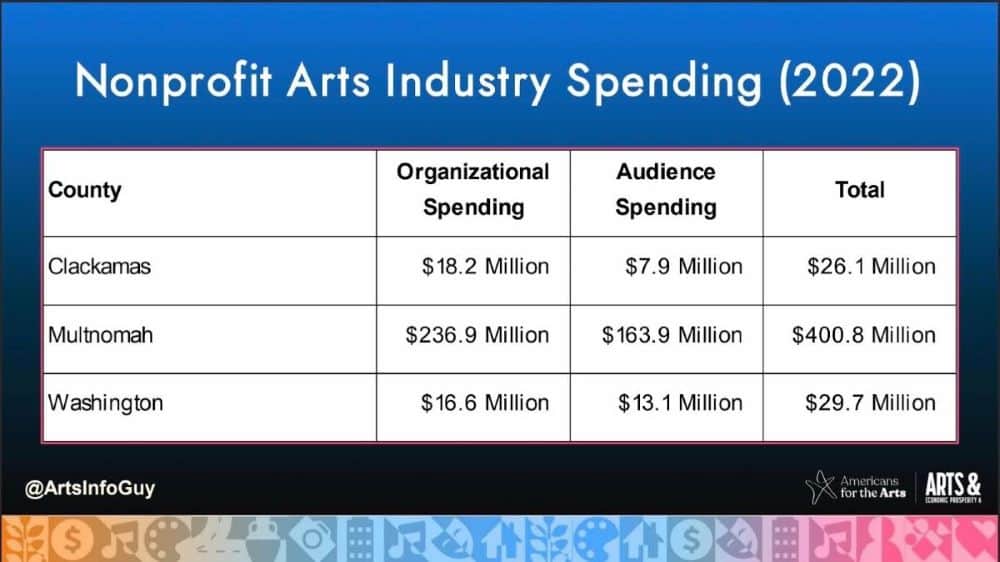
Mika Martinez, Portland Catrinas, 2023, Photography and graphic design on aluminum, 20 x 40 x 2 inches.
FOR IMMEDIATE RELEASE
January 11, 2024
Portland, Oregon — The Regional Arts & Culture Council (RACC), in partnership with the City of Portland, announces that 33 artworks by 26 artists have been selected for purchase through a competitive application and review process. Celebrating and taking inspiration from the people and places of Portland, the selected pieces include paintings on canvas, photography, works on paper, mixed media, textiles and beadwork.
The selected artists are: Rebecca Boraz, Sarah Bouwsma, Terrance Burton, May Maylisa Cat, Epiphany Couch, Menka Desai, Michael Espinoza, Emily Fitzgerald, Future Prairie, Terrence Gasca, Josh Gates, Elisa Gusdal, Jo Hamilton, Linda Higgins, Anya Keyes, Latoya Lovely, Marne Lucas, Mika Martinez, Christa Nye, Rory ONeal, M Prull, Rebecca Rodela, Hampton Rodriguez, Mona Superhero, Heléna Dupre Thompson, and Aaron Wessling.
Left: Helena Thompson, One Eighty Compulsion 14, 2020, Archival pigment print (photography), 22 x 17 inches. Right: Menka Desai, New Year at Lan Su Chinese Garden, 2023, Gouache and embroidery on handmade paper, 5 x 7 inches.
The artworks will enter RACC’s Public Art Collection of portable works, a rotating collection displayed in accessible municipal spaces throughout the City of Portland and Multnomah County. Fifteen of the works will enter the Visual Chronicle of Portland, a collection consisting of more than 400 works on paper that focuses on artists’ views of the city’s social and urban landscapes as they evolve through time.
Art Selection Process
Facilitated by RACC, an independent panel made up of artists, community representatives, and City employees participated in a three-stage review process to select artworks for purchase. RACC received applications from 155 artists, with up to six artworks submitted per person. The panel participated in thoughtful discussion and collective decision-making to determine which pieces to purchase from the many talented artists who submitted work.
Taking Inspiration from Portland’s New City Map
Funded by the City of Portland, the theme of the artwork purchase project was “Taking Inspiration from Portland’s New City Map.” The theme references Portland’s four new geographic districts, which were created by the City of Portland’s Independent District Commission through extensive community input. Submitted artworks could directly or indirectly relate to the theme, by portraying Portland’s neighborhoods or people; making personal, social, historical, political, or natural connections to the City or districts; and/or exploring broader ideas of borders, maps, place, or community.
Quote from Kristin Calhoun, Director of Public Art: “From celebrating community, to honoring the natural spaces within the City, to reflecting on urban changes, these thirty-three artworks present diverse perspectives on what it means to live, work, and play in Portland now. RACC is grateful to all the artists that submitted work for this opportunity, and we continue to be inspired by the unique viewpoints and creativity of the artists in our region.”
To learn more about the two-dimensional artwork purchase project, the selected artists, or to schedule an interview with RACC or the project team, please contact Eleanor Sandys at esandys@racc.org.
Contact Information:
- Eleanor Sandys, Public Art Project Coordinator (interim), RACC, esandys@racc.org
- Meech Boakye, Communications Lead, RACC, mboakye@racc.org
###
About the Regional Arts & Culture Council:
The Regional Arts & Culture Council is a 501(c)(3) nonprofit organization that provides impactful and transformative funding for artists and nonprofit organizations in Clackamas, Multnomah, and Washington Counties; manages an acclaimed public art program; leads an advocacy and arts education program; and offers a wide range of technical and professional development workshops. RACC advocates for equity, inclusion, and access, working to build a community in which everyone can participate in culture, creativity, and the arts. We remain steadfast in our mission to enrich every neighborhood we serve.








